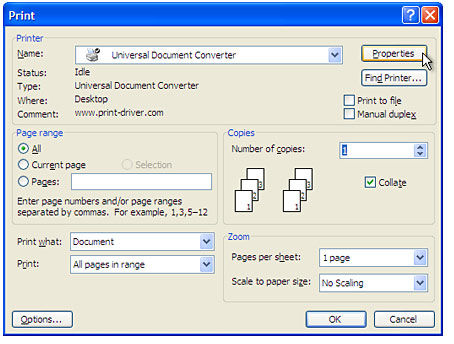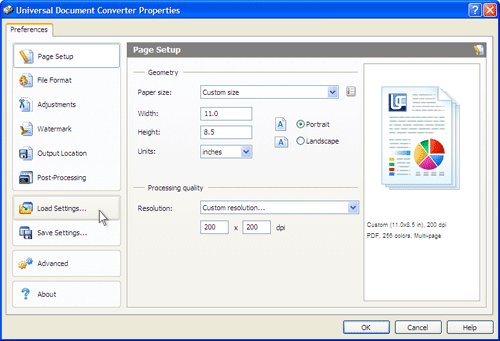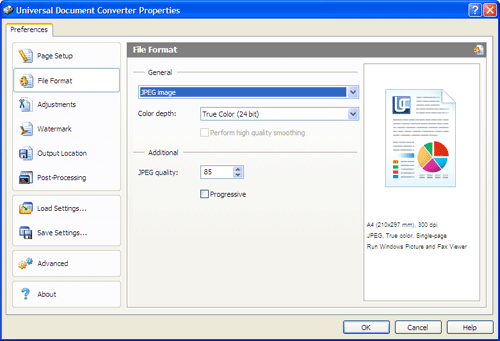Locked out of your house in the
middle of the night? Have you lost the key to the padlock on your shed?
Before you pay a locksmith to let you in or to open something up,
consider picking the lock yourself. Most locks around the home or office
are simple pin-and-tumbler locks and can be relatively easy to open
using a pick and tension wrench, both of which can be improvised from
common household items.
While the process is simple and can be mastered with practice, picking such a lock requires a great deal of patience. To pick locks, a person has to insert a thin metal pin or needle, moving the pin around until hearing a click or a gear shift. This article will show you what to do.
Steps
While the process is simple and can be mastered with practice, picking such a lock requires a great deal of patience. To pick locks, a person has to insert a thin metal pin or needle, moving the pin around until hearing a click or a gear shift. This article will show you what to do.
Steps
- 1Understand how your lock works. The pin-and-tumbler lock consists of a cylinder that can rotate within its housing (see the illustrations below). When locked, the cylinder is kept in place by several pairs of pins. The top pin of each pair protrudes into both the cylinder and the housing, thus preventing the cylinder from turning. When the correct key is inserted, it pushes the pairs of pins up so that the top pins no longer enter the cylinder. When this happens, the cylinder can be turned and the lock will open.
- Note the five pairs of pins. The yellow pins enter both the cylinder and the silver housing around it, thus preventing the cylinder from turning. The springs provide resistance to keep the pins in place.
- When the key is inserted, the grooves and ridges on the key push the pins up to the correct heights so that all the yellow pins are completely out of the cylinder, thus allowing the cylinder to turn and the lock to open.
- 2Purchase a pick and tension wrench. Each pick is specialized for a different problem. A tension wrench, or torque wrench, is the device you use to apply pressure to turn the lock cylinder. Professional-grade picks and tension wrenches can be purchased in sets (see picture), but many lock picking hobbyists make good quality sets of their own. See the Things You'll Need section below for information on how to make your own picks and tension wrenches.
- 3Place the tension wrench into the lower portion of the keyhole.
- 4Determine which way the cylinder must be turned to unlock the lock. If you commonly use the lock, you probably already know which way you turn the key to open the lock. If you don’t know, use the tension wrench to apply torque to the cylinder, first clockwise and then counterclockwise. The cylinder will only turn a fraction of an inch before it stops. Try to feel the firmness of the stop. If you turn the cylinder the wrong way, the stop should feel very firm and stiff. If you turn it the right way, there should be a bit more give.
- Some locks, especially among padlocks, will open regardless of which way the cylinder is turned.
- 5Apply light torque to the tension wrench in the correct direction, and hold. The required torque will vary from lock to lock and from pin to pin, so this may require some trial and error. Start gently, though.
- 6Insert the pick into the upper part of the keyhole and feel the pins. With the pick in the keyhole, you should be able to press up and feel the individual pins with the tip of the pick. You should be able to push them up and feel them spring back down when you release the pressure. Try to push each one all the way up. Identify which one is the hardest to push up. If they're all very easy to push up, turn the tension wrench more to increase the torque. If one won’t go up at all, ease the torque until you can push it up. Alternatively, you may wish to “rake” the pins before this step (see Tips below).
- 7Push the stubborn pin up until it “sets.” Press the stubborn pin with just enough pressure to overcome the downward pressure of the spring. Remember, the pin is actually a pair of pins. Your pick is pushing against the lower pin, which in turn pushes against the upper pin. Your goal is to push the upper pin completely out of the cylinder. Then, when you stop pushing, the lower pin will fall back down into the cylinder, but the torque on the cylinder will result in a misalignment of the hole in the cylinder with the hole in the housing, and the upper pin should then rest on the cylinder without falling back down. You should hear a faint click as the upper pin falls back down on top of the cylinder. You should also be able to push the lower pin up a little with no resistance from the spring—when this occurs you most likely have the upper pin “set.”
- 8Continue applying torque and repeat the last two steps for each of the remaining pins. It is imperative that you maintain torque on the cylinder to prevent the set pins from dropping back down. You may need to make slight increases or decreases in torque for each pin.
- 9Use the tension wrench to turn the cylinder and unlock the lock. Once all the pins are set, you should be able to turn the cylinder. Hopefully you have already ascertained the correct direction to turn it. If you have chosen the wrong direction, you will need to start over and reset all the pins.
- Lock picking enthusiasts generally frown upon the use of paperclips, safety pins, and hair clips. The argument against these improvised tools is that they are more difficult to use than specially made picks. While this is generally true, they can be quite effective with practice and patience.
- A technique called “raking” or “scrubbing” can be used as a shortcut. To rake the pins, insert the pick (preferably a rake pick or paperclip with several bends) all the way to the back of the keyhole without applying torque to the cylinder. Then quickly pull the pick out, raking it upward against the pins while simultaneously applying light torque with the tension wrench. Theoretically, you could pick a lock just by raking it once or twice, but generally raking will only set some of the pins, and you will need to individually set the remaining pins.
- Lock picking is really all about the tension wrench. You will constantly need to find and hold just the right amount of torque to allow you to push the upper pins out of the cylinder while ensuring that pins set and stay set.
- You can’t see inside a lock very well, so use your hearing and sense of touch to try to figure out what’s going on in there. Be patient and methodical, and pay attention to faint clicks you may hear and the resistance you feel. With the information you gather in this way, you can visualize the inside of the lock.
- Apply just enough pressure to the pins to overcome the friction and spring forces. You don’t want to jam the lower pin between the cylinder and the housing.
- If you're truly lazy, you can buy picks online that you just insert and turn.
- Lock picking has become a popular hobby for those who enjoy solving puzzles. If you want to pursue this hobby, it’s best to practice with a very simple, cheap lock, or even a lock with all the pins removed except for one. Look for old locks too, online or in antique stores.
- Some locks are “upside down” (especially in Europe). The pins are located at the bottom of the cylinder instead of the top. The procedure for picking these locks is the same, except that you push the pins down. If the lock is opened by inserting the key upside down (with the serrated edge facing down) the pins are on the bottom. Once you insert your pick into the keyhole it will be easy to tell whether the pins are located on the bottom or top.
- Sanding the picks smooth will make it easier for you to slide them in the keyhole and maneuver them.
- The number of pins varies from lock to lock. Padlocks often have 3 or 4, while door locks generally have 5-8.
- The pins will often set either in the order of front-to-back or back-to-front; it will take a little experimentation to find the correct direction for your lock. While back-to-front is probably the most common order, you might need to start somewhere else.
- Locks other than simple pin-and-tumbler locks such as wafer-tumbler, or tubular locks can also be picked, but require slightly different procedures.
- If it's a simple lock, like in a cashbox or a desk drawer, you might not even need to pick it. Insert a flat piece of metal all the way to the back of the lock, then turn it clockwise while moving it up and down. With a bit of luck, you can open the lock in seconds.
Warnings
- If a pin won’t budge when you try to push it up, you are probably applying too much torque so that the cylinder is too greatly misaligned with the hole in the housing. If this is the case, you’ll need to release some of the torque. Doing so may cause pins to fall that are already set. Unfortunately, there’s no way around that. Try changing the order of your picking on your next attempt.
- When done properly, lock picking does not harm the lock, but if you apply too much torque to the cylinder or too much pressure to the pins, there is always the risk of damaging the mechanism.
- There are varying laws on lock picking, owning lock picks, and creating improvised tools. Most US states have specific laws in their criminal codes that define possession of "burglars tools" as a distinct and separate crime, but how this crime is defined varies among states. Check the laws for your area. And obviously, only ever pick your own locks!
Things You'll Need
- Tension wrench: Many common objects can be used as a tension wrench, provided that they are strong enough to apply pressure to the cylinder and thin enough to just barely fit in the end of the keyhole. You don’t need or want the wrench to be so thin that it goes all the way in the keyhole. The tension wrench should also be small enough to afford you plenty of room to maneuver the pick when they are both in the keyhole. You can use a small Allen wrench that you file down at the end or you can just use a thin-tipped flathead screwdriver.
- Picks: You can use a safety pin or a paper clip. To make a pick from a paper clip, straighten the paper clip and then bend it 90 degrees very close to one end. Alternately, you may bend one end into a tiny loop. Needle-nose pliers make bending the paper clip much easier. Make sure whatever you choose for a pick is sturdy, or you will not be able to apply enough pressure to push the lock’s pins up without your pick bending. Making a pick out of a hacksaw blade is best. Bobby pins can also be an alternative as well. Just cut off the ball parts, bend it into a right angle, take one end and bend it a full 90 degree angle.










































 When the parent company is inclined towards netherworlds (with the only redemption seen in the launch of Bullet 500 classic), the hope is rising in the shape of growing culture of custom chopper designers. A huge thanks has to be said toRobbie for posting about it in our forums
When the parent company is inclined towards netherworlds (with the only redemption seen in the launch of Bullet 500 classic), the hope is rising in the shape of growing culture of custom chopper designers. A huge thanks has to be said toRobbie for posting about it in our forums 



